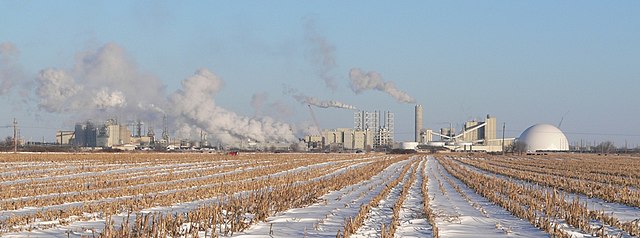A January 12 grain yield estimate revision by the U.S. Department of Agriculture (USDA) has slumped corn and soybean prices.
On what is usually the most important grain market announcement each January, the 2024 USDA grain report caught traders unawares.
Opposite to expectations of corn holding to the November projection of a record 15.23 billion bushels, the new estimate actually hiked yields.
Likewise, many expected no change to the November estimate of a four-year low soy crop totaling 4.124 billion bushels. Instead, the January estimate shows a slight rise in 2023’s soybean production to 4.16 billion bushels.
Both scenarios have seen market prices begin to tumble. Following the release of the report, March corn hit the week’s low of $4.47 a bushel on January 12. By January 15, however, corn had rebounded with a 10-cent gain to trade at $4.57 per bushel.
For soybeans, the January 12 report saw a 121/4-cent dip, to finalize the day at $12.241/4 per bushel. Though by January 15 March soybean futures had rebounded, they were still lower than expectations.
USDA’s data inundation on the markets got even more complicated when the agency kept Brazil’s soybean yields as they were in 2023. Experts had expected a lower revision, given the ongoing weather effects in the South American country. This lack of adjustment has had a poor effect on price as it hints of extra oilseed in the market.
Yield Rate Edges the Markets
USDA first tempered the market in 2024 by citing a rise in the yield rate for both grains. This dramatically sunk prices in comparison with those of November 2023.
Corn yield estimates inched up to 177.3 bushels an acre from the November 2023 projection of 174.9 a bushel.
Against all expectations, soybeans also gained 0.7 bushels an acre in the January report. The yield per acre for the 2023 crop now stands at 50.6 bushels against the November estimate of 49.9 bushels.
With this news, producers are now coming to terms with what the South American soy crop may hold in surprise. Farmers in the U.S.’ Midwest say that their crop performed extremely well and the same could apply to Brazil.
In 2023, the USDA grain report lowered Brazil’s soy production to 157 million tonnes, 4 million tonnes less than earlier. It also reduced corn output by a 2 million-tonne margin.
Hence, the current outlook for grain trade is trained on the March to May corn and soy harvest in Brazil.
